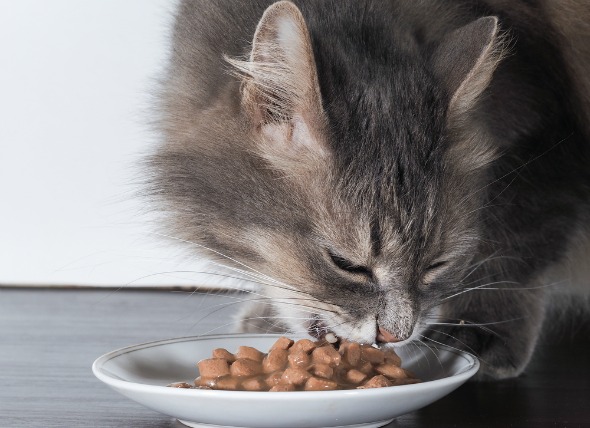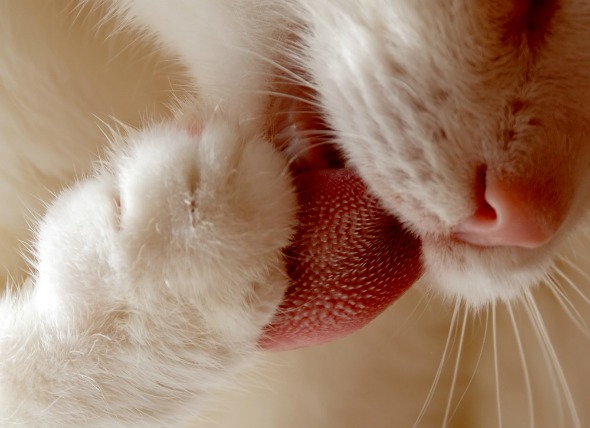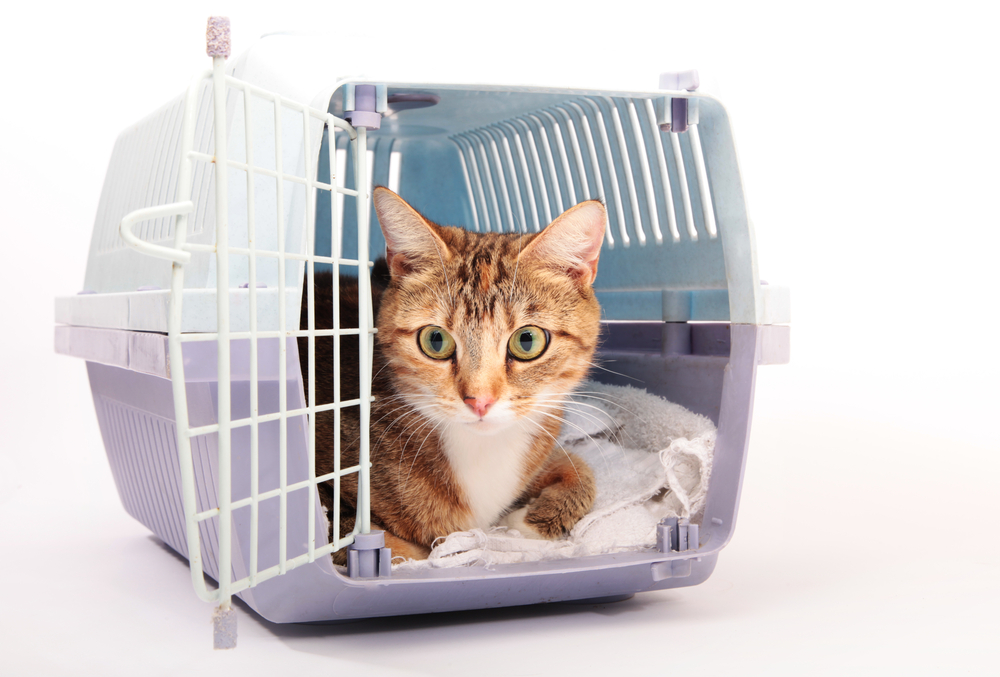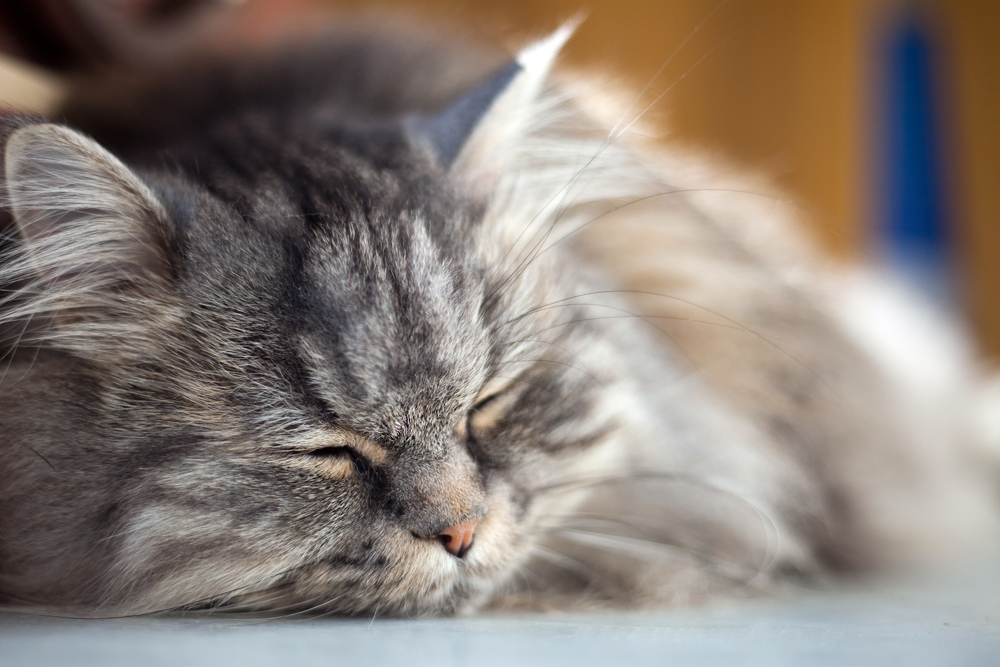

Ethylene glycol toxicity is a potentially fatal condition that results from the ingestion of substances containing ethylene glycol, an organic compound commonly seen in antifreeze. (In addition to being found in the car's engines to prevent freezing and overheating, it is used in hydraulic brake fluids.) Cats usually come into contact with antifreeze when it leaks from a car's engine onto the ground, when it is spilled onto the ground while being added to a car's engine, or when the container is left uncapped.
Antifreeze is recognizable by its bright green coloring and "sweet" taste. Although it leaves a repulsive aftertaste, by then it may be too late. Even small amounts can be fatally toxic to the body's organs, including the brain, kidneys and liver.
This is one of the most common forms of poisoning; any breed or age is susceptible. Etylene glycol poisoning is also covered in our emergency section, which includes immediate care that you can give to your cat and tips on prevention. This does not take the place of veterinary care, but will assist you in treating your cat in a timely manner.
Early signs are seen from 30 minutes to 12 hours after ingestion:
Other symptoms often develop 12 to 24 hours after ingestion of ethylene glycol (antifreeze):
Toxicity is directly related to ingestion of ethylene glycol, the principal component (95 percent) of most antifreeze solutions.
It’s extremely important that you have your cat seen by a veterinarian as quickly as possible after ingestion of anything that contains ethylene glycol. Even if you only suspect that your cat has ingested ethylene glycol, if the cat is showing any or all of the effects of ethylene glycol toxicity, and the substance is accessible in any way (particularly for cats that are allowed to go outdoors unattended), you should take your cat to be checked. If your cat is vomiting or has diarrhea, you should collect a sample of the vomit or fecal contents to present to your veterinarian. Diagnosis may be that much faster, saving valuable time and possibly preventing full organ shutdown if supportive therapy is given quickly.
You will need to provide your veterinarian with a medical background and as much detail of the onset of symptoms as possible. Standard tests include a urinalysis and complete blood test, which will be sent for laboratory analysis immediately. Your veterinarian may also use ultrasound to look at the liver and kidneys, which are often swollen in response to ethylene glycol ingestion.
Ultrasonography can also be helpful. Possible findings may be renal cortices (the external layers of the kidneys) that are hyperechoic as a result of crystals. That is, the external layers of the kidney respond to the sonographic sound waves with a denser echo than the surrounding areas because of the more solid nature of the crystal formation in the renal tissue.
Cats are often hospitalized and treated inpatient, however, if your veterinarian is able to examine and begin treating your cat less than five hours from the time of ingestion, you may be able to avoid prolonged inpatient treatment. The treatment goal will be to prevent absorption of ethylene glycol into the body, to increase excretion or removal of the substance from the body, and to prevent the body from chemically processing the ethylene glycol into toxic compounds.
Intravenous fluids will be given to correct or prevent dehydration, increase blood flow to the tissues, and to promote elimination of urine -- increasing the possibility of eliminating the ethylene glycol from the body before it can do much damage. Treatment will be accompanied by administration of bicarbonate (given slowly intravenously) to correct metabolic acidosis (a condition in which the pH of the body is too low).
If your cat develops excess levels of urea (a waste product of urine that is normally eliminated form the body) and other nitrogenous waste products in the blood and kidney, failure of the kidney can occur. This may be characterized by production of small amounts of urine in cats, indicating that most of the ethylene glycol has been metabolized by the body. At that point there will be little benefit from treatment specifically designed for ethylene glycol poisoning. In this case, treating the symptoms becomes the goal: correcting fluid, electrolyte, and acid–base disorders; promoting elimination of urine - medications to induce production and elimination of urine may help; peritoneal dialysis may be used to hasten removal of the toxins from the body (peritoneal dialysis is a type of dialysis in which fluids are delivered to the abdomen and the lining of the abdomen acts as a filter to remove waste products from the blood; after a certain amount of time, the fluids and waste products are removed from the abdomen).
Your cat may need extended treatment over several weeks before kidney function is fully reestablished. In many cases, kidney transplantation has been successfully employed in cats with ethylene glycol–induced kidney failure.
Ethylene glycol is readily available in many brands of antifreeze and has a somewhat pleasant taste that attracts animals to quickly ingest it. Enough of the fluid can be ingested before the animal is aware of the aftertaste, at which point too much of the fluid has been taken into the body. Ethylene glycol has a small minimum lethal dose, even small amounts can be lethal to the internal organs.
As a pet owner, you should be aware of the toxicity of ethylene glycol containing antifreeze and take precautions to safeguard your pets and other animals from potential sources of ethylene glycol. As much as possible, educate your family, social contacts and community about the hazards of ethylene glycol and how to protect animals. If your cat tends to go out of doors regularly, you will want to make a habit of checking the neighborhood for spills -- such as the type that would occur in driveways or curbside when someone refills the coolant/antifreeze chamber in a car's engine. Antifreeze is recognizable by its bright green coloring. Throwing a bucket of water over the puddle should be sufficient for dispersing the liquid.
It is possible to find antifreeze products that use propylene glycol rather than ethylene glycol as the active ingredient. Propylene glycol is relatively nontoxic, but should still be kept out of way of your pets.
Blood work to monitor the kidneys, acid–base status, and urine output will be conducted daily for the first few days by your veterinarian. Your doctor will also monitor urine pH to determine the response to treatment and adjust the treatment accordingly. If your cat is able to be treated promptly, before excess levels of urea and other nitrogenous waste products can enter the blood, there are usually no complications and recovery will progress sufficiently.
 Low Blood Sugar in Cats
Hypoglycemia in Cats
The blood sugar, or glucose,
Low Blood Sugar in Cats
Hypoglycemia in Cats
The blood sugar, or glucose,
 Tongue Cancer (Squamous Cell Carcinoma) in Cats
Lingual Squamous Cell Carcinoma in Cats
A squamou
Tongue Cancer (Squamous Cell Carcinoma) in Cats
Lingual Squamous Cell Carcinoma in Cats
A squamou
 Cats and Motion Sickness
Gastrointestinal Distress Related to Motion in Cats
&nbs
Cats and Motion Sickness
Gastrointestinal Distress Related to Motion in Cats
&nbs
 FIV or Feline AIDS in Cats
Feline Immunodeficiency Virus Infection (F
FIV or Feline AIDS in Cats
Feline Immunodeficiency Virus Infection (F
 Anemia, Nonregenerative in Cats
Nonregenerative Anemia in Cats
A decrease in red
Anemia, Nonregenerative in Cats
Nonregenerative Anemia in Cats
A decrease in red
Copyright © 2005-2016 Pet Information All Rights Reserved
Contact us: www162date@outlook.com